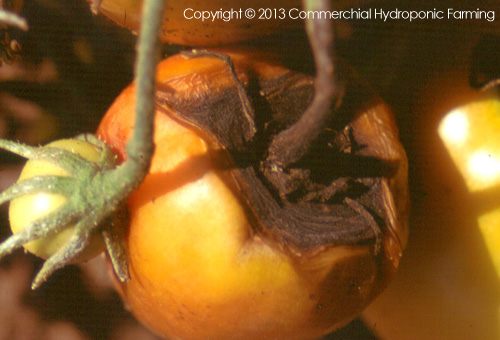Early blight (Alternaria solani) common fungus on tomatoes
Early blight (Alternaria solani) is one of the most common funguses found on tomatoes. The fungus infects mainly the leaves, but stem and fruit infection might also occur.
Early blight symptoms
Infection starts on the older leaves or at the base of the stem, after which it spreads upwards. Initially lesions can be confused with those of bacterial spot and spec, but during warm weather lesions enlarge to form dark brown angular lesions with characteristic rings in the centre of the lesion. If fruit infections occur, dark brown leather lesions with concentric rings are usually to be found near the stem end. Quite often infected leaves become yellow. The greatest damage usually occurs as soon as the fruit mature. If high temperature prevail during this period a large part of the foliage are killed before the end of the season which exposes the fruit to injury from sunscald.
Early blight causes small, dark, slightly sunken areas that enlarge to form circular or elongated spots with light centres or elongated spots with light centres, which occasionally show concentric markings like those on the leaves. The large spots mostly start on the ground line causing partial girdling known as collar rot.
Early blight control
- Do not plant infected seedlings.
- Follow a weekly spraying program with registered fungicides as soon as day temperatures exceed 25°C
- Overhead irrigation will encourage disease development.

Early blight: When fruit infections occur, dark brown leather lesions with concentric rings are usually to be found near the stem end. Quite often infected leaves become yellow. The greatest damage usually occurs as soon as the fruit mature



